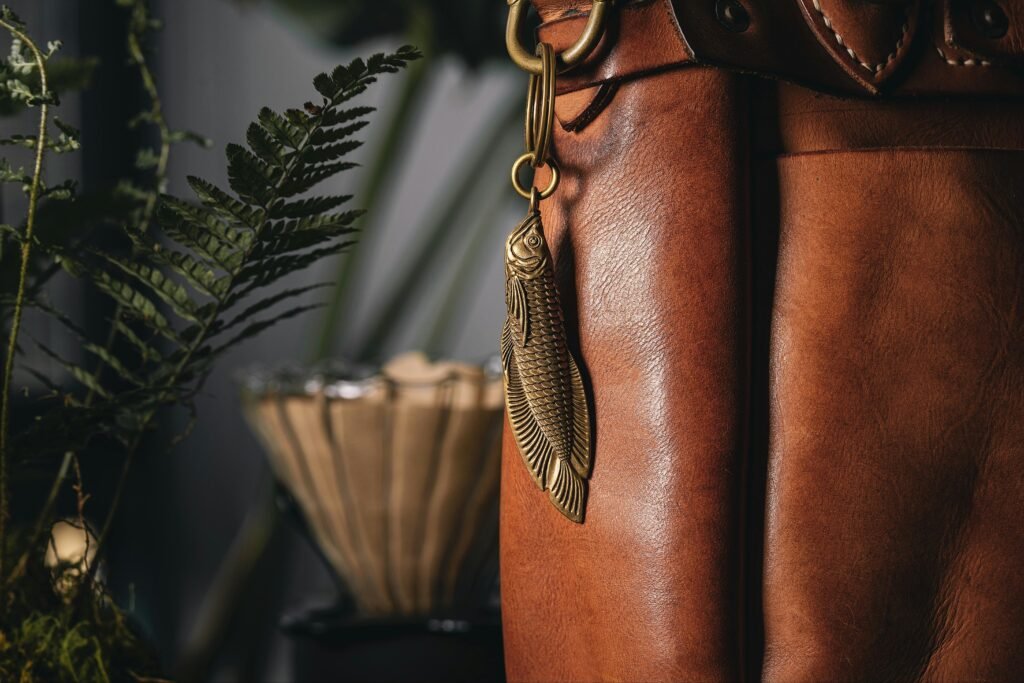In order to keep your leather wallet looking its best and ensure that it lasts for years to come, it is essential to provide it with proper cleaning and care. This comprehensive guide will walk you through the necessary steps to maintain the quality and appearance of your wallet. With easy-to-follow instructions and helpful tips, you’ll be equipped to handle minor spills, remove stains, and protect your leather wallet from damage. Discover the secret to keeping your wallet looking as good as new with this ultimate guide to proper cleaning and care for leather wallets.

This image is property of images.pexels.com.
Understanding Leather Wallets
Leather wallets are a staple accessory for both men and women. They are not only practical for carrying cash, cards, and identification but also make a stylish fashion statement. However, understanding the different types of leather wallets, the quality and durability of leather, and the various benefits of owning a leather wallet is essential in order to maintain and care for them effectively.
Different types of leather wallets
Leather wallets come in a wide variety of styles and types. From bi-fold to tri-fold, cardholder to money clip, and minimalist to spacious designs, there is a leather wallet to suit every individual’s needs and tastes. Some popular types of leather wallets include:
-
Bi-fold Wallet: This classic style features two equal halves that fold in the center, providing ample space for cards, cash, and even a clear ID window.
-
Tri-fold Wallet: With three equally sized folds, these wallets offer additional card slots and compartments for extra storage.
-
Cardholder: Perfect for those who prefer a minimalist approach, cardholders are sleek and compact, designed to hold essential cards without the bulk.
-
Money Clip Wallet: These wallets feature a metal clip to securely hold cash, making them an excellent choice for those who prefer to carry minimal bills.
Leather quality and durability
When it comes to leather wallets, the quality of the leather used plays a significant role in determining their durability and longevity. Genuine leather is known for its strength, flexibility, and resistance to wear and tear. Full-grain leather, which is made from the outer hide of an animal, is considered the highest quality leather due to its natural imperfections and unique grain patterns.
Top-grain leather is another popular option, as it is slightly more affordable and still offers excellent durability. Genuine leather, although not as high in quality as full-grain or top-grain leather, is a budget-friendly option that still provides decent longevity. It is important to note that synthetic or faux leather wallets are not as durable or long-lasting as genuine leather wallets, as they tend to crack, peel, or fade over time.
Benefits of owning a leather wallet
There are numerous benefits to owning a leather wallet. Apart from their aesthetic appeal and timeless style, leather wallets offer several advantages that make them a worthwhile investment. Some of the key benefits of owning a leather wallet include:
-
Durability: Leather is a rugged material that can withstand daily wear and tear, ensuring your wallet stays intact and functional for a long time.
-
Timeless Elegance: Leather wallets exude a sense of class and sophistication, never going out of style regardless of the latest fashion trends.
-
Natural Patina: As leather ages, it develops a unique patina that gives it character and tells a story. This natural wear and tear only enhance its beauty and elegance.
-
Practicality: Leather wallets come in various sizes, designs, and compartments, providing ample space to organize cards, cash, and other essentials efficiently.
-
Aesthetic Appeal: Leather’s rich texture, earthy tones, and smooth finish make it visually appealing, adding a touch of luxury to your everyday carry.
Now that you understand the basics of leather wallets, let’s delve into the preventive measures you can take to ensure their longevity and pristine condition.
Preventive Measures
Prevention is the key to maintaining the quality and appearance of your leather wallet. By following these simple preventive measures, you can keep your wallet looking its best for years to come.
Keep wallets away from excessive heat and sunlight
Excessive heat and prolonged exposure to sunlight can cause leather to fade, crack, or dry out. It is crucial to avoid leaving your leather wallet in hot cars or areas with direct sunlight. Instead, store it in a cool, dry place to preserve its quality and prevent any damage caused by heat or UV rays.
Avoid exposing wallets to water or moisture
Leather is highly susceptible to damage from water and moisture. Exposure to these elements can lead to swelling, discoloration, and even the formation of mold or mildew. It is important to keep your leather wallet away from water, rain, or any other sources of moisture. If your wallet does get wet, gently pat it dry with a soft cloth and allow it to air dry naturally. Do not use heat sources to speed up the drying process, as this can cause the leather to warp or crack.
Regularly clean wallets with a soft brush or cloth
Regular cleaning is essential to prevent dirt, dust, and debris from accumulating on your leather wallet. Use a soft brush or a gentle cloth to remove surface dirt and dust particles. This simple step will help maintain the leather’s appearance and prevent any abrasive particles from scratching the surface.
Apply leather conditioner to maintain its shine and softness
Leather is a natural material that requires regular moisturization to prevent drying and cracking. Applying a leather conditioner every few months helps nourish the leather, keeping it soft, supple, and hydrated. Choose a high-quality leather conditioner that is suitable for your specific type of leather. Gently massage the conditioner into the wallet and wipe off any excess. This will restore moisture, enhance the leather’s shine, and extend its lifespan.
With these preventive measures in mind, let’s now move on to the cleaning process for leather wallets.

This image is property of images.pexels.com.
Cleaning Process
Regular cleaning is essential to remove dirt, stains, and oils that can accumulate on a leather wallet over time. By following these step-by-step instructions, you can effectively clean your leather wallet while preserving its quality and appearance.
Empty and inspect the contents of the wallet
Before cleaning your leather wallet, empty its contents and inspect each card, bill, or item for any debris or damage. This will help ensure that no foreign substances remain inside the wallet and that all items are in good condition.
Gently remove debris with a soft brush or cloth
Using a soft brush or gentle cloth, lightly brush the surface of the wallet to remove any loose dirt, dust, or debris. Be careful not to press too hard or scrub aggressively, as this can damage or scratch the leather.
Use a mild leather cleaner and apply with a soft cloth
When it comes to cleaning leather wallets, using a mild leather cleaner is crucial. Avoid using harsh chemicals or household cleaners, as they can strip the leather’s natural oils and cause discoloration or damage. Dampen a soft cloth with the leather cleaner and gently wipe the entire surface of the wallet, paying extra attention to any areas with stains or spots.
Wipe off any excess cleaner and let the wallet dry naturally
After cleaning, take a clean, damp cloth and gently wipe off any excess cleaner from the surface of the wallet. Make sure to remove all traces of the cleaner to prevent any potential damage to the leather. Once done, allow the wallet to air dry naturally in a cool, well-ventilated area.
Apply leather conditioner to restore moisture and shine
Once the wallet is completely dry, apply a small amount of leather conditioner to a soft cloth. Gently massage the conditioner into the leather, covering all areas evenly. Allow the conditioner to penetrate the leather for a few minutes, and then wipe off any excess conditioner with a clean cloth. This step will restore moisture, enhance the shine, and protect the leather from drying or cracking.
Now that you know how to effectively clean your leather wallet, let’s explore how to deal with common stains that may occur.
Dealing with Stains
Despite our best efforts, stains can sometimes find their way onto our leather wallets. Whether it’s an oil-based stain, an ink mark, or a stubborn stain, knowing how to handle different types of stains is crucial for maintaining the appearance of your leather wallet.
Identify the type of stain and its source
Before treating a stain, it is important to identify its type and the source. Different stains require different removal methods, so understanding the nature of the stain will help you choose the appropriate cleaning agent and technique.
Remove oil-based stains with baking soda or cornstarch
Oil-based stains, such as grease or food stains, can be effectively treated using baking soda or cornstarch. Gently sprinkle a small amount of baking soda or cornstarch onto the stained area and let it sit for a few hours or overnight. This will help absorb the oil from the leather. Afterward, wipe off the powder with a clean cloth. If the stain persists, repeat the process or consider using a leather stain remover.
Treat ink or dye stains with rubbing alcohol or nail polish remover
Ink or dye stains can be particularly challenging to remove, but with the right approach, they can be effectively treated. Dampen a clean cloth or cotton swab with rubbing alcohol or non-acetone nail polish remover. Gently blot the stained area, being careful not to rub vigorously, as this can spread the stain. Continue blotting until the ink or dye starts to lift. Once the stain has been removed, rinse the area with clean water and gently pat dry.
Use a leather stain remover for stubborn stains
For stubborn stains that are resistant to the above methods, a leather stain remover can be a useful tool. Choose a high-quality leather stain remover specifically designed for the type of leather your wallet is made from. Follow the instructions provided with the stain remover, applying it carefully to the stained area. Gently blot or rub the stain remover, depending on the manufacturer’s instructions. Once the stain has been removed, rinse the area with clean water and let it dry naturally.
Apply leather conditioner after stain removal
After successfully removing a stain from your leather wallet, it is crucial to recondition the leather. Use a small amount of leather conditioner and massage it into the cleaned area, following the same process as mentioned earlier. This will help restore moisture, nourish the leather, and prevent any potential drying or cracking.
Now that you have learned how to deal with stains, let’s move on to storage and maintenance tips to ensure the longevity of your leather wallet.

This image is property of images.pexels.com.
Storage and Maintenance Tips
Proper storage and regular maintenance are vital for preserving the quality and lifespan of your leather wallet. By following these simple tips, you can keep your wallet in pristine condition for years to come.
Store leather wallets in a cool, dry place
To prevent unnecessary damage, always store your leather wallet in a cool, dry place. Avoid areas with high humidity or extreme temperatures, as they can cause the leather to deteriorate. A closet shelf or drawer is an ideal storage spot, as it provides protection from sunlight, moisture, and excessive heat.
Avoid folding or cramming the wallet to prevent creases
Leather is a material that can develop creases or wrinkles if folded or crammed for extended periods. Avoid overstuffing your wallet with unnecessary items or placing heavy objects on top of it. This will help maintain its shape, prevent creasing, and ensure the longevity of the leather.
Use a dust bag or wrap in a soft cloth when not in use
When your leather wallet is not in use, consider storing it in a dust bag or wrapping it in a soft cloth. This will provide an extra layer of protection against dust, debris, and potential scratches. Avoid using plastic bags, as they can trap moisture and cause the leather to deteriorate.
Avoid using harsh chemicals or solvents on leather
When cleaning or maintaining your leather wallet, it is crucial to avoid using harsh chemicals or solvents that can damage the leather. Stick to mild leather cleaners, conditioners, or products specifically designed for leather care. Non-abrasive and non-acetone solutions are generally safe to use and will help maintain the leather’s integrity.
Regularly condition the leather to prevent drying and cracking
Leather is susceptible to drying and cracking if not properly maintained. To prevent this, regularly apply a leather conditioner to your wallet. Follow the same process mentioned earlier, using a small amount of conditioner and massaging it into the leather. This will nourish the leather, restore any lost moisture, and keep it soft and supple.
By following these storage and maintenance tips, you can ensure the longevity and pristine condition of your leather wallet. However, as leather ages, it develops a natural patina and wear that can add character and charm.
Handling Wallet Aging
As time goes by, your leather wallet will develop a natural patina and wear that adds a unique touch to its appearance. Embracing this aging process can enhance its character and make it even more appealing. However, there are a few measures you can take to rejuvenate the appearance of your wallet if desired.
Embrace natural patina and wear on the leather
Leather develops a natural patina over time, which is a sign of its authenticity and age. This patina adds depth and richness to the leather, giving it a distinctive charm. Embracing this natural process can showcase the quality and unique characteristics of your leather wallet.
Utilize leather polish or wax to rejuvenate the appearance
If you prefer a more uniform and polished look, consider using a leather polish or wax. These products can help restore the color and shine of your wallet, rejuvenating its appearance to a like-new condition. Choose a polish or wax that matches the color of your leather, and follow the instructions provided to apply it correctly.
Consider professional leather restoration if needed
If your leather wallet has significant damage or requires extensive restoration, consider seeking professional help. Professional leather restoration experts have the skills and expertise to repair and rejuvenate leather products. They can handle complex repairs, replace worn-out parts, and restore your wallet to its former glory.
Handle repairs promptly to prevent further damage
Whether it’s a loose stitch or a small tear, it is important to address any repairs promptly before they worsen. Small issues can escalate into more significant damage if left unattended. If you notice any signs of wear, damage, or deterioration, take your wallet to a professional or address the issue yourself if you have the necessary skills.
By following these measures, you can prolong the lifespan of your leather wallet and ensure it remains in optimal condition for years to come. Now let’s explore some additional tips for maximizing the longevity of your wallet.
Tips for Longevity
To ensure your leather wallet stands the test of time, consider the following tips:
Invest in high-quality leather wallets
Investing in high-quality leather wallets made from full-grain or top-grain leather is essential. While they may be pricier, their superior quality and durability will make them worthwhile investments in the long run. Quality leather wallets are more resistant to wear and tear, ensuring they withstand everyday use and maintain their appearance for years to come.
Avoid overstuffing the wallet with unnecessary items
Overstuffing your wallet with unnecessary items such as old receipts, expired cards, or loose change can strain the leather and lead to premature deterioration. Only carry the essentials to avoid putting unnecessary pressure on your wallet’s structure.
Keep sharp objects away from the wallet
Sharp objects like keys, knives, or pens can scratch or pierce the leather, causing irreparable damage. Keep these objects separate from your wallet or use a separate compartment to minimize the risk of accidents.
Regularly inspect the stitching and seams for any signs of damage
Stitching and seams play a crucial role in the durability of a leather wallet. Regularly inspect these areas for any signs of loose threads or fraying. Promptly address any issues to prevent further damage and ensure the structural integrity of your wallet.
By following these tips, you can preserve the longevity and appearance of your leather wallet. However, it is important to avoid common mistakes that can inadvertently harm your wallet.
Avoiding Common Mistakes
To prevent any accidental damage to your leather wallet, avoid these common mistakes:
Do not use harsh chemicals or household cleaners
Using harsh chemicals or household cleaners to clean your leather wallet can strip away its natural oils and cause discoloration or damage. Stick to mild leather cleaners or products specifically designed for leather care.
Avoid excessive scrubbing or rough handling
Leather is a delicate material that can be easily damaged if handled roughly. Avoid excessive scrubbing, rubbing, or aggressive cleaning techniques, as they can scratch or scuff the leather’s surface.
Do not use heat sources to speed up the drying process
Using heat sources such as hairdryers, heaters, or direct sunlight to dry a wet leather wallet can cause the leather to warp, crack, or lose its natural oils. Instead, allow your wallet to dry naturally in a well-ventilated area.
Avoid storing wallets in humid or damp environments
Humidity and dampness can cause mold, mildew, and deterioration of the leather. Avoid storing your leather wallet in areas prone to moisture, such as bathrooms or basements. Instead, opt for a cool, dry place to preserve its quality.
By avoiding these common mistakes, you can ensure the longevity and pristine condition of your leather wallet. Now, let’s explore some specific care tips for different types of leather wallets.
Dealing with Specific Leather Types
Different types of leather require different care methods to maintain their appearance and quality. Here are some specific care tips for common leather types used in wallets:
Cowhide leather wallets
Cowhide leather is one of the most popular choices for wallets due to its durability and versatility. To care for cowhide leather wallets, follow the general cleaning and maintenance tips mentioned earlier. Regularly condition the leather, avoid excessive exposure to heat or sunlight, and promptly address any stains or damage.
Sheepskin leather wallets
Sheepskin leather wallets are known for their softness and luxurious feel. To care for sheepskin leather wallets, handle them with extra care to prevent stretching or deformation. Avoid exposing them to excessive moisture, as sheepskin is more susceptible to water damage. Use a gentle cloth or brush for cleaning, and regularly condition the leather to maintain its softness.
Goatskin leather wallets
Goatskin leather is highly durable and has a distinct texture that adds character to wallets. To care for goatskin leather wallets, use a soft brush or cloth to remove dirt and dust. Avoid storing them in humid environments or exposing them to excessive moisture. Regular conditioning will help maintain its suppleness and prevent drying.
Exotic leather wallets
Exotic leather wallets, such as those made from snakeskin, crocodile or alligator leather, require specialized care due to their unique properties. Follow the manufacturer’s instructions or consult with a professional for specific care suggestions. Exotic leathers may require different cleaning products and techniques to maintain their appearance and integrity.
By following these specific care tips, you can ensure the longevity and optimal condition of your leather wallet, regardless of the type of leather it is made from. However, there may come a time when professional cleaning and care are necessary.
Benefits of Professional Cleaning and Care
While regular cleaning and maintenance can go a long way in preserving your leather wallet, there are certain situations where professional cleaning and care may be required. Here are some benefits of seeking professional assistance:
Deep cleaning to remove stubborn stains
Professional cleaners have access to specialized products and techniques that can effectively remove stubborn stains that regular cleaning methods may not be able to address. They can provide a deep clean to restore your wallet’s original beauty.
Restoration of faded or worn-out leather
Over years of use, leather wallets may become faded or worn-out. Professional leather cleaners are skilled in restoring the color and sheen of the leather, making it look like new. They can address issues such as color fading, scratches, scuffs, or minor tears.
Expert knowledge in handling specific leather types
Professional leather cleaners have extensive experience and knowledge in handling different types of leather. They know the best cleaning techniques and products suited for specific leather types, ensuring your wallet receives the right care and attention it deserves.
Extended lifespan of the wallet with proper maintenance
By entrusting your leather wallet to professionals, you are ensuring that it receives proper care and maintenance, which can significantly extend its lifespan. With their expertise, your wallet will be revitalized and ready to serve you for many more years to come.
In conclusion, understanding leather wallets and properly caring for them is essential to maintain their quality, appearance, and longevity. By following the preventive measures, cleaning process, storage tips, and avoiding common mistakes outlined in this guide, you can ensure your leather wallet remains in pristine condition for years to come. Remember to invest in high-quality leather wallets, regularly inspect and maintain them, and consider seeking professional assistance when needed. With proper care, your leather wallet will continue to be a stylish and functional accessory, accompanying you on your everyday ventures.
